OBR CTM S.A. at the Polish Navy Centenary

The OBR CTM S.A. company (Research and Development Center - Center for Maritime Technology) is entering the second centenary of the Polish Navy with readymade solutions in its offer. Not only would these solutions make it easier to restore the Polish Navy’s potential, as they may also be utilized by other branches of the Polish military. One just needs to use those solutions in a skillful manner.
OBR CTM S.A. company (Research and Development Center - Center for Maritime Technology), based in Gdynia, has been a part of the Polish Armaments Group since 2014. It is, as many experts argue, one of the most important of the non-military entities securing the sophisticated needs of the Polish Navy. Not only is the OBR CTM facility manufacturing systems and hardware, but it, above all, acts as the designer, taking into account the most innovative directions where the most modern navies are headed.
Obviously, no potential exists to manufacture all of the naval systems in Poland. OBR CTM S.A., since many years, has been proving that majority of those solutions may be manufactured and developed domestically, and thus it is possible to create unique systems that have no counterpart anywhere else. Approach as such guarantees continuous modernization and availability of local servicing for the systems used by the Polish military, with user recommendations being taken into account. Certainly, the cost associated with servicing, upgrades and maintenance would be lower than in case of imported systems.
This is why, when wondering about the benefits that could be gained by the Polish Navy, the OBR CTM’s offer shall also be taken into account. The answer to the question why the above is so important may be found in a form of the ORP “Kormoran” MCMV, the first vessel that has been built for the Polish Navy since several years.
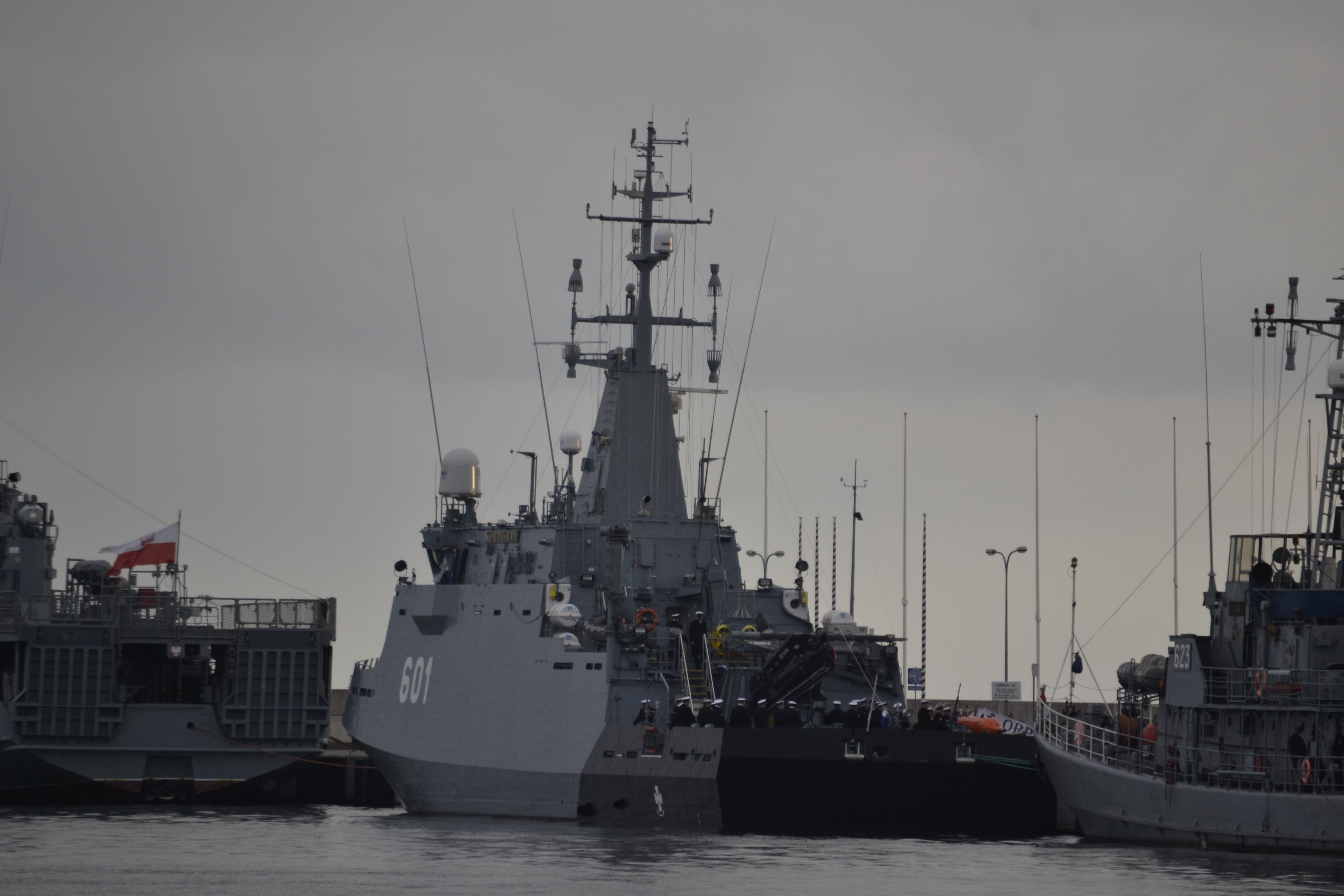
ORP “Kormoran” II and SCOT-M Naval Combat System
ORP “Kormoran” features numerous specialist solutions, a major portion of which has been delivered by the OBR CTM S.A. company (Research and Development Center - Center for Maritime Technology). Furthermore, OBR CTM has been acting as the integrator of all elements included in the combat section of the vessel. The entity in question has designed, manufactured and delivered the vessel command and combat system, the SCOT-M suite (Ship COmbat Tactical – Minehunter). This solution, in a universal version, has been awarded numerous times, it has received, for instance the “Bursztynowy Medalion” [Amber Medallion] award during the Balt Military Expo in Gdansk, back in June 2018, or the Presidential award, during the MSPO International Defence Industry Exhibition in September 2018.
Read More: SCOT - Polish Warship Systems Integration Capability
But assessment made by the user, the Polish Navy, is most important here. The user, receiving the system, after the state certification was completed, positively assessed the solution, accepting the vessel in operational service. SCOT-M suite is very important, as it integrates all effectors and sensors onboard the warship, allowing the crew to carry out the minehunting operations. And this solution has a decisive value for the warship’s combat potential and effectiveness. It acts as the warship’s brain (servers and computers used for computations, gathering and recording the data and helping in management of subsystems and supporting the decisionmaking chain), heart (via the CIC that receives all the data where that data is used to support the crew’s decisionmaking process) and nervous system (via wiring and fiber optics, interconnecting practically all systems and devices).
SCOT-M allows for creating a “comprehensible” situational picture, integrated on the basis of the data from own sensors and external sources. SCOT-M needs to support the operators in the process of identifying and classifying the detected threats, and also when it comes to creating scenarios used to implement proper countermeasures. The tasks above are being carried out on the basis of continuously provided navigational, weather and ship-subsystems information.
SCOT-M is a result of many other programmes that, since many years have been, in an ongoing manner, carried out at OBR CTM. The less complicated ship combat suites have been installed, already, on the 206FM and 207 design minesweepers (“Pstrokosz” and “Bełtwa” systems). Earlier on, many other developmental works were taking place, including “Lodówka” (project 255 vessel and creation of a real-time system), “CARL 01”, “Pstrokosz-1”, “Gawron-Integracja”, “Wojownik-Integracja”, “CARL-02” and “LR-4K” implementation works and “Flaming-A” and “Flaming-B” scientific research initiatives. Developing a system at CTM for gathering, developing and distributing the mine situation information for the Mine Warfare Data Centre created as a part of the “Uhla” R&D initiative also played a relevant role here.
All of the above initiatives made it possible to create the ultimate form of the solution for the Kormoran MCMV. Active participation in the offset implemented by Thales was also quite important, according to OBR CTM. Integration of numerous armament systems was carried out for the OBR CTM centre, and the facility has been, consequently, deepening its knowledge and creating a proper team of people within that regard. Moreover, relevant software design management procedures were also introduced
The Kormoran programme successes are a good foundation for creating further SCOT systems for other vessels of the Navy. CTM has been carrying out similar tasks earlier on too, preparing the MGS1241 export solution for three small missile corvettes (1241RE, NATO codename: Tarantul I). Within the framework of this solution the Polish experts managed to integrate missile and artillery armament within a single shipborne C2 system. Thus it may be said that OBR CTM has proven that it has proper know-how at its disposal, when it comes to development of systems for combat vessels.
Passive Protection System for the Kormoran II MCMV
One of the important tasks related to the Kormoran II vessel included development of a Passive Protection System (System Ochrony Biernej), providing safety to these warships when operating in dangerous ares, with numerous mines or enemy assets being active. It is impossible to fully neutralize the physical signature of the vessel/ which would entirely eliminate the danger of activating the non-contact fuses of the sea mines, or the threat posed by the IR-guided munitions.
And even though the ORP “Kormoran II” vessel features a degaussed steel hull and silent drive, the signatures of the systems embedded within the hull force the crew to monitor the signature of the whole vessel and minimize them.
This has been made possible by the passive protection system developed by OBR CTM. The system makes it possible to monitor the magnetic, electric, heat and hydroacoustic signatures of the vessel. This is done thanks to, for instance, the vessel’s demagnetizing system and a multi-sector cathode protection station. These solutions make it possible to diminish the signatures down to the level defined by the NATO requirements concerning the mine countermeasure vessels. What’s even more important, the suite makes it possible to visualize the safety zones on the ship, supporting the warship’s command system in detecting, classifying and identifying the sea mines.
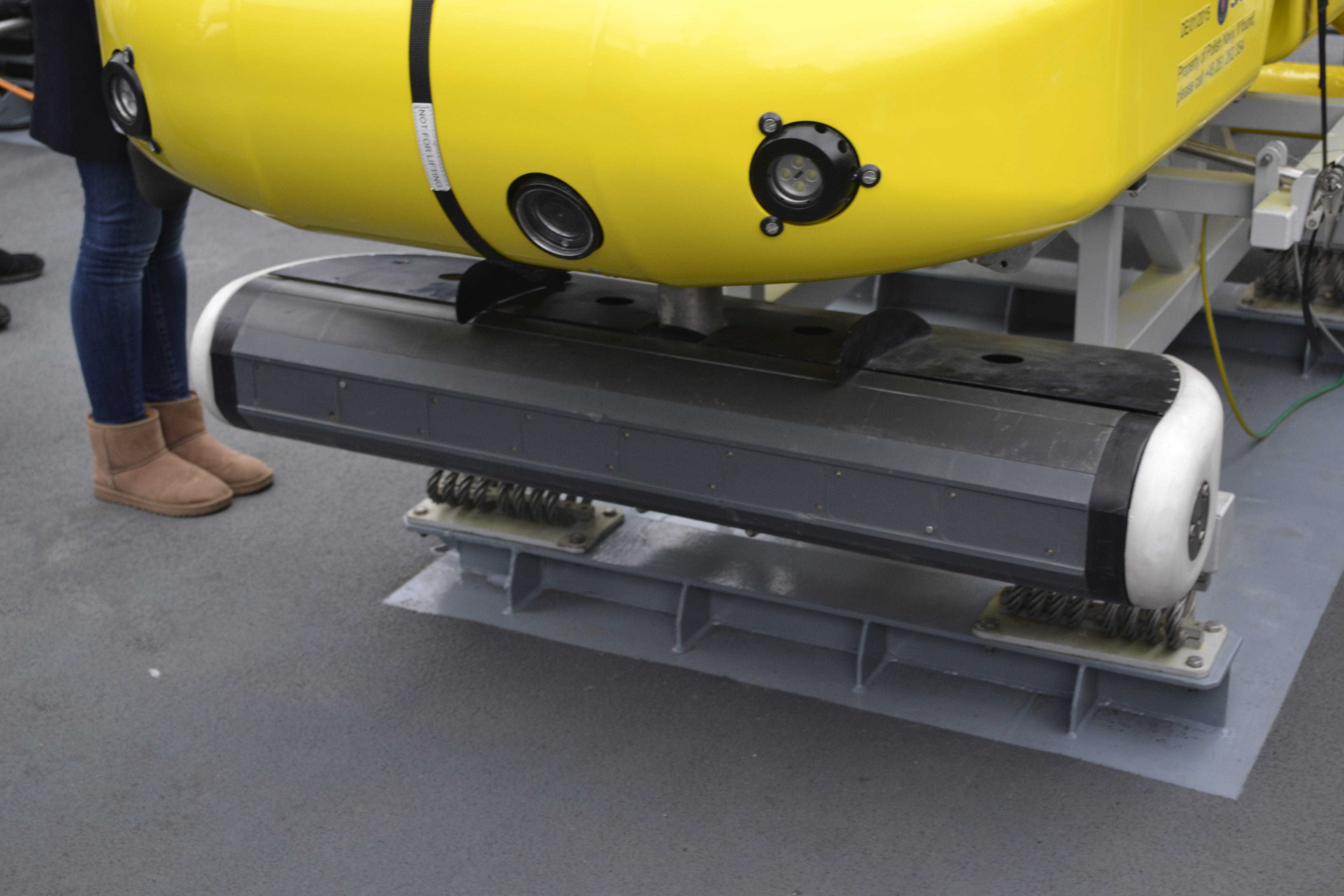
OBR CTM, since many years, has been delivering mine detection sonars for the minehunters of the Polish Navy. At the moment these sensors are used by all of the Polish minesweepers (Class 207) and minehunters (206FM class and Kormoran II class). In case of ORP “Kormoran”, two Polish sonars have been introduced:
- SHL-101T/M keel Sonar that makes it possible to scan the water in front and under the vessel. It is a tri-frequency hydroacoustic device which enables Kormoran to look for buried and anchored mines, including the ones using the principles of the stealth technology. Using signal frequency modulation the impulses can be compressed. This, on the other hand, makes it possible to obtain imagery with in-depth resolution of several centimeters, and enhances the signal to noise ratio. This automatically enhances the detection and classification process;
- SHL-300 Sonar, as a part of the SPVDS (Self Propelled Variable Depth Sonar) system, became a part of the Saab Double Eagle Mark III UUV. Vehicle as such may move under and in front of the vessel (even a couple of hundred meters away). This allows the crew to detect threats earlier and to monitor the bottom, if the temperature distribution underwater is uneven and the acoustic waves cannot reach the bottom, hitting a layer of water which has a different temperature, which may happen in case of the under-keel solutions. The sonar itself makes it possible to detect, classify and localize the buried and anchored mines and other underwater objects on the bottom of the water body or suspended in the water, with a particular emphasis placed on the hydrometeorolgy of the Southern part of the Baltic Sea, as OBR CTM summarizes.
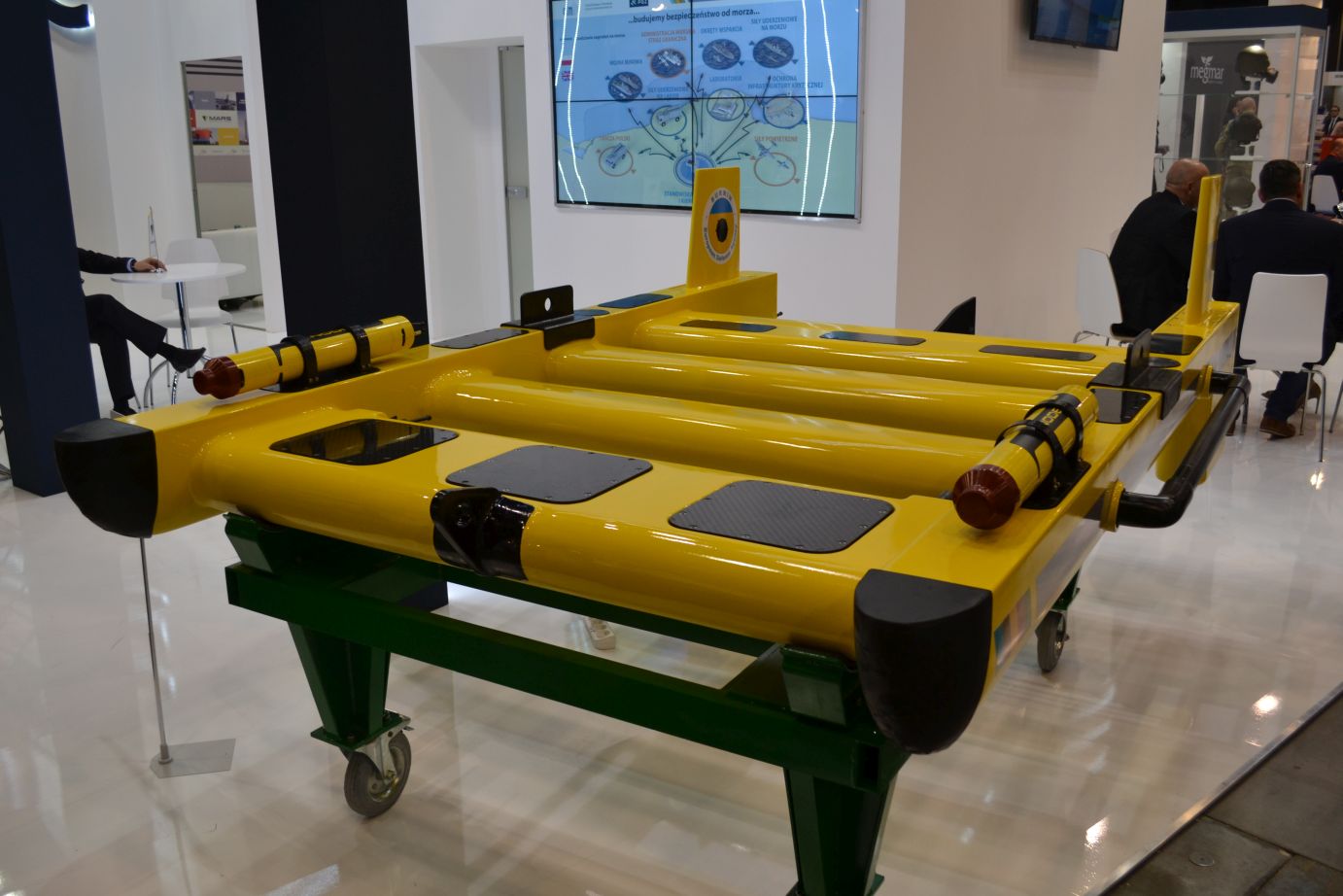
Underwater Stabilized Sensor Platform, awarded with the DEFENDER distinction during the previous edition of the MSPO event, is an entirely new sensor, allowing the user to detect and classify the mines, including the buried ones. It is prepared to be towed by a motorboat or a small, autonomous, yet unmanned, craft. The platform has been fitted with magnetic and electromagnetic sensors, it is also prepared to be fitted with other types of sensors. The platform is stabilized, and it maintains a required depth with the use of an autopilot which also prevents it from sudden pitch, yaw and depth variations.
The Underwater Stabilized Sensor Platform has received numerous awards, including the DEFENDER award, presented during the MSPO event in Kielce. The platform has been developed by the CTM facility within the framework of the international BURMIN initiative, pursued by a consortium involving, alongside CTM, the French TUS company (leader), Dutch TNO, Belgian RMA and German companies and institutes (WTD 71, Fraunhofer ICT, IPHT Jena, Atlas Elektronik). The aforesaid initiative is a part of the EDA-driven Unmanned Marine Systems (UMS) programme.
Read More: OBR CTM Experts Attend NATO and EDA Meetings
Mine Countermeasures Developed at OBR CTM S.A.
Mine countermeasures are another domain in which the OBR CTM experts have been quite successful. Here solutions designed for destroying mines and mine-resembling objects are offered, along with systems that could be used to act against mines that have not been detected.
The former case applies to a family of remote control TOCZEK explosives used as mine countermeasures. OBR CTM has developed three basic variants of explosives as such. They can be used at depths from 6 to 150 meters. The C variant is the smallest one, weighing 3 kilograms and dedicated for divers and underwater craft. It carries a small quantity of explosives, but placing it precisely in direct vicinity of the neighbouring anchored mine guarantees proper effectiveness in cutting the rope that holds the mine and attaches it to the anchor.

Larger explosives used by and integrated with a number of underwater craft come in two variants. The A version is the largest one (250×450 mm), weighing 48 kilograms and containing 40 kilograms of TNT. It is lowered close to the mine with the use of a mechanism placed on an underwater vehicle, and it is used, primarily, to destroy the bottom mines, including the buried mines.
The B version is smaller (180x340 mm) and weighs 10 kilograms, it contains 5.7 kilograms of TNT. TOCZEK B is placed close to the mine with the use of a special-purpose arm fitted onto the submersible vehicle. The arm in question makes it possible to precisely place the charge close to the mine, with proper, safe distance maintained. All of these charges are wireless-activated via a OBR CTM-patented detonator system using encoded acoustic signals. The signal generator developed by the OBR CTM facility is fitted with a special purpose emitter lowered into the water, which, thanks to its power output, makes it possible to reach the devices 400 to 800 meters away, at depths of up to 160 meters. Each of the charges has its own codenumber, once the signal is encoded there is no risk that the corresponding signal would detonate any other charge than the desired one.
A number of towed minesweeping systems may be used to act against the mines without prior detection. The purpose of such systems is to initiate the fuse by simulating a signature of an actual vessel. These systems may be towed by any MCMV, including the new “Kormoran II” class ship.
OBR CTM has been specializing in development of systems as such since many years, coming in a form, for instance, of the “Promienica” acoustic/magnetic minesweep used by the Polish Navy. MLM Modular Non-Contact Minesweep is the latest solution of this kind. Following the Underwater Stabilized Sensor Platform, it is another project pursued by OBR CTM, also within the scope of a programme run by the European Defence Agency. The modular minesweep, is designed to act against mines using non-contact fuses, the operation of which is dependent on detection of the specific vessels on the basis of its characteristic signatures. The minesweep is tasked with generating identical signatures that could activate the mine fuses or protecting the vessels with well known signatures. The minesweep simulates movement of these ships through the dangerous zones before they actually enter the given area.
The “Modular Lightweight Minesweeping” project is being implemented in stages. The first stage (2011-2014) came to an end with OBR CTM developing a technology demonstrator of a lightweight modular non-contact minesweep that was, ultimately, to be towed by an autonomous surface vessel. BURMIN (“Buried Mines”) was another project undertaken by CTM, between 2013 and 2017. Its goal was to develop systems for detection and neutralization of buried seamines. Furthermore, steps have been made to set a common standard for unmanned mine countermeasures of this kind.
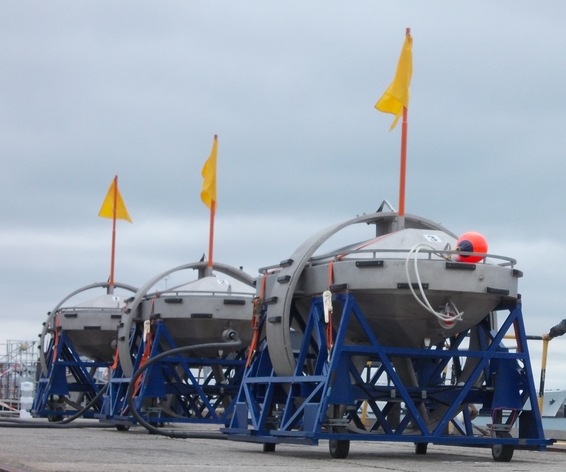
At this stage, OBR CTM was to develop an underwater sensoric platform stabilized in relation to the bottom. The current MLM II phase is to result in development of a new version of the minesweep, with a variable towing depth, able to work from a couple to several meters underwater, and that is going to provide the user with a wider range of operational uses of the mine countermeasure.
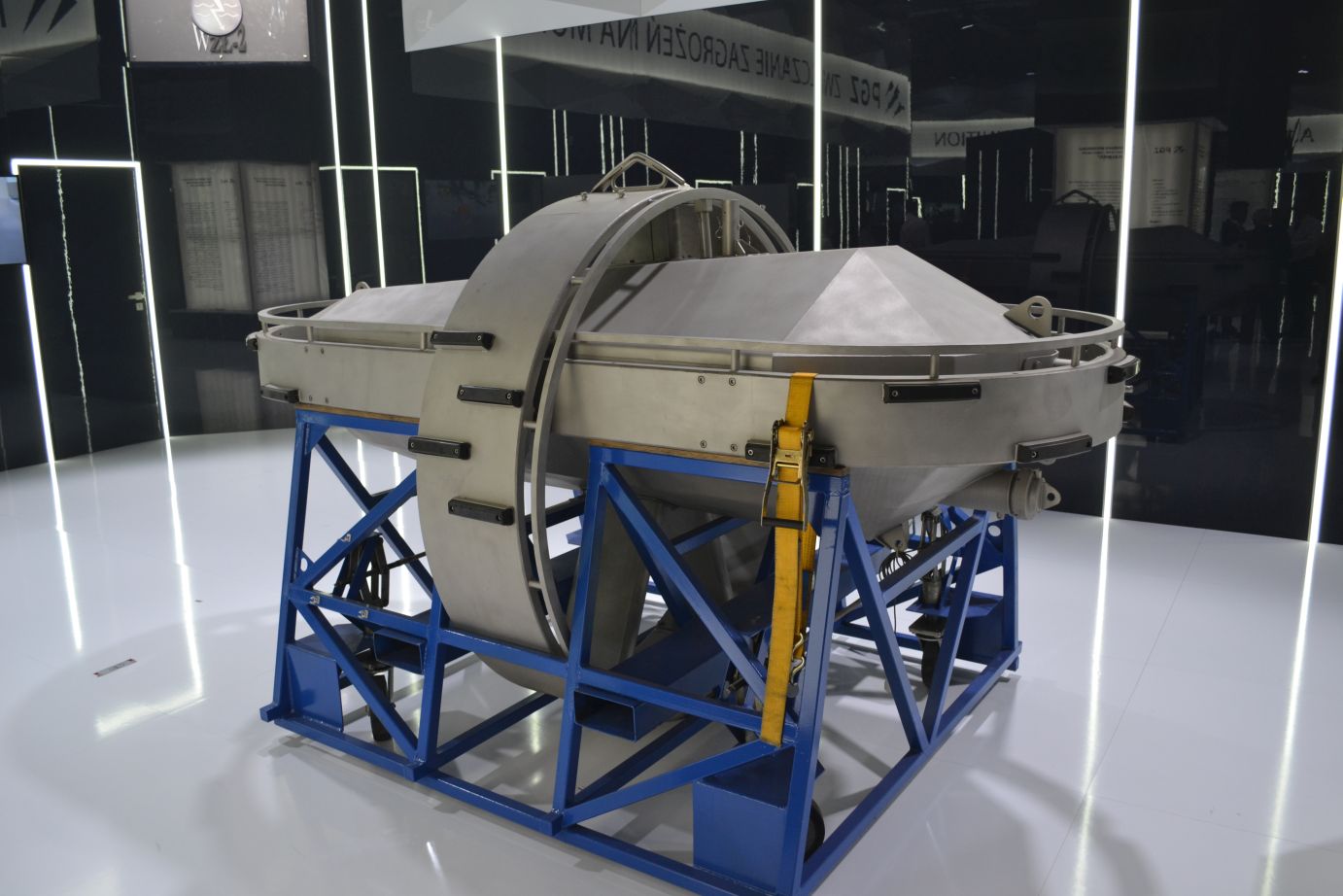
Naval Mines
Naval Mines are the least known of the solutions developed by OBR CTM S.A., due to the confidential nature of their specification. Two solutions as such are offered now:
• MMD-2 non-contact bottom mine reacting to the hydroacoustic (stand by channel) and hydrodynamic and magnetic signatures (combat channels). This mine has been manufactured and developed for the Polish Navy since 1995;
• Non-contact fuse for anchor mines that may expand the capabilities of KB and AGSB contact mines. Thanks to a solution as such, not only may this type of a naval mine react to direct contact with the vessel attacked, but it may also be triggered by its signatures, via the independently programmable channels: hydroacoustic, hydrodynamic and depth channels.
OBR CTM Harbour Protection System
OBR CTM has been, since many years now, developing a family of systems designed for the purpose of securing harbours and important infrastructure from any underwater threats, for instance within the framework of R&D effort on the multi-sensor protection system for the Polish Navy Port in Gdynia, known under the name “Kryl”.
On the basis of this experience, an entirely new system for detecting underwater threats has been developed. This system, according to OBR CTM S.A., has been based on acoustic modules or diver-detecting sonars creating an acoustic barrier and a number of magnetic sensor forming a magnetic barrier. The PMB portable magnetic barrier may be used to protect harbours or a group of warships. It may also act as a complementary solution enhancing the detection process and the process in which underwater terrorist threats are classified.
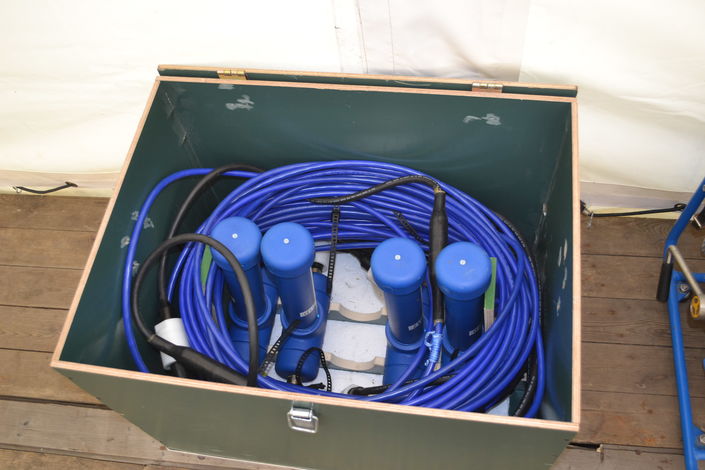
Working in a manner that is highly complex, OBR CTM also proposes a countermeasures suite integrated with the detection system that may be based on explosives generating a pressure shockwave underwater. This solution is especially useful when counteracting the underwater terrorist and sabotage threats.
Depending on the size of the explosive, the shockwave may act as a deterrent, it may be non-lethal or lethal. The explosives are especially useful on approaches to ports and naval bases, in the ports and within the anchorages.
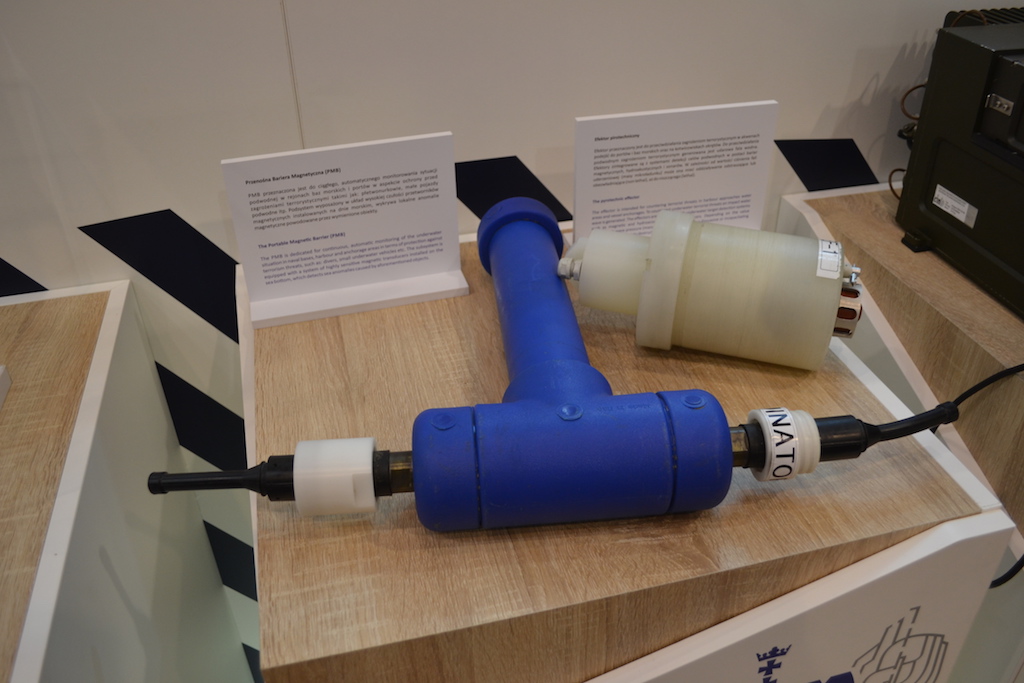
OBR CTM Radios
OBR CTM S.A. company (Research and Development Center - Center for Maritime Technology) has its research potential extending beyond the scope of the requirements of the Navy. This may be proven by a family of Polish radios based on a concept of unified platform for radio communications (RKS-8000, RKP-8100 and RKL-8200). Research and implementation and development works on the individual solutions have been carried out at OBR CTM S.A since many years. The works included development of signal-processing techniques, perfecting, implementation and development of new data transmission algorithms, automatic link establishment, all of which would increase the intentional and non-intentional jamming and interference.
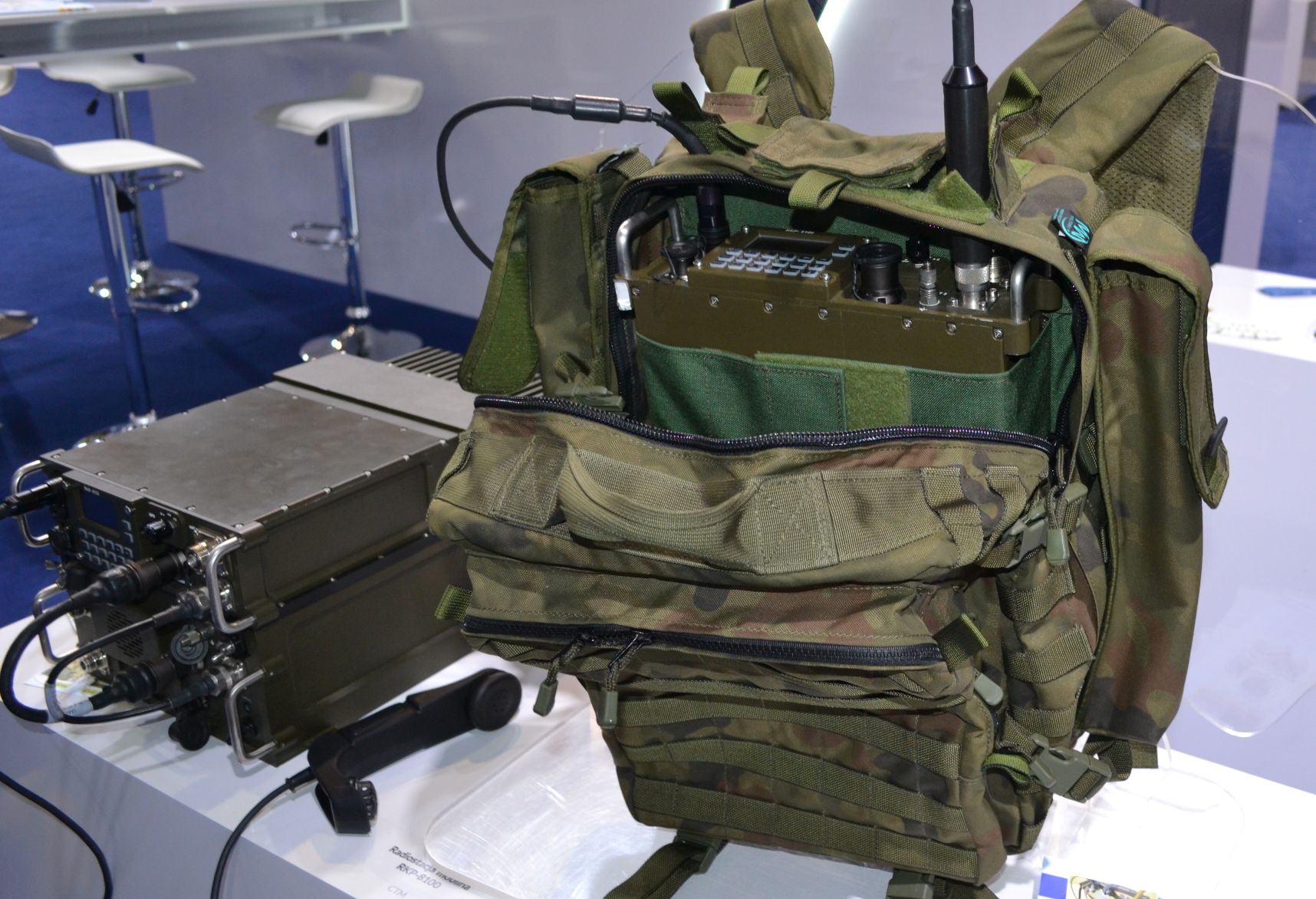
Thanks to the above, OBR CTM yields complete control over all of these systems, also owning copyright to all of its solutions. RKP-8100 is a backpack broadband radio, which is operated within the frequency range from 1.5 to 512 MHz (HF/VHF/UHF bands) may be a good example here. According to the manufacturer, this radio may be viewed as the latest generation digital transmitter-receiver, meeting the requirements of the following international norms and documents: STANAG 4538, 4529 4285, 4539, 4415, 4203, 4204, 4205, 5066, as well as MIL-STD- 188-110B/C, MIL-STD-188-141B/C norms.
The RKP-8100 radio also includes an embedded encryption module, compliant with the AES-256 algorithm and “frequency hopping” mode. It may be easily embedded within the Link-11 system. The whole device weighs around 7.5 kilograms (4.5 kilograms without the batteries), so it may be viewed as a backpackable system. The radio may also be used in a mobile ad-hoc network-MANET setting, in line with STANAG 4691 norm. The vehicular variant has been fitted with a special RKP-8100AM-B adapter, integrated into a single device with the RKP-8100 radio.
The housing of the adapter makes it possible to rapidly mount it within a vehicle, while its user interface ensures intuitive operation. The vehicular variant has its maximum power output increased up to 150 W (within the HF band) and 50W (within the UHF band). Moreover, the reliability of communications in collocation conditions has been increased, through implementation of additional narrow-band filtering systems. The filters cover the whole HF band and selected frequencies of the UHF band (30–88 MHz and 225–400 MHz), where they may be operated with the frequency hopping principle adopted.
RKP-8100 became a base for other solutions offered by OBR-CTM. Here, RKL 8200 may be a good example. It is the first Polish aviation radio featuring a “frequency hopping function”, with an ability to add new software functions, with frequency range limited between 30 and 88 MHz, in line with the specific requirements issued by the Ordering Party.
RKL-8200 radio meets the aviation design, reliability and environmental requirements of the Defence Norms for the S.2.1 group devices, as well as the electromagnetic compatibility requirements of the Polish Norms and Defence Norms for the onboard aerospace systems. What is relevant, the compliance with the aforesaid norms was being verified at the certified OBR CTM S.A labs, another feature that distinguishes the OBR CTM S.A. company in Gdynia.
OBR CTM - Lab and Technical Facilities
OBR CTM S.A. company (Research and Development Center - Center for Maritime Technology) has been developing its technical and laboratory facilities throughout the whole period of its existence. Not only is this allowing the Center to develop and check its own solutions, as it may also carry out research of compliance of each element of the naval technology with the requirements of the Polish Register of Shipping (PRS) for instance. Whereas OBR CTM may be tasked both with defence as well as with civil test activities, this potential is indeed being utilized for the purposes related to defence and civil requirements, for instance to carry out R&D effort within the framework of NATO or EDA programmes.
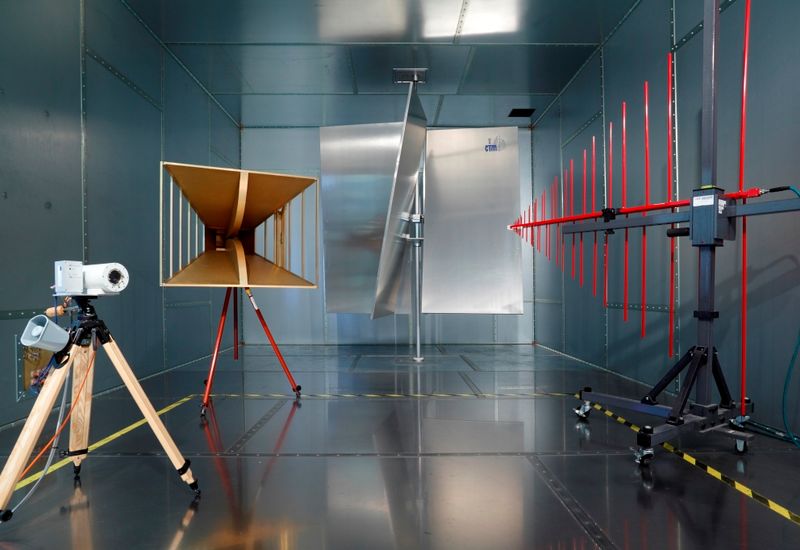
The currently available laboratory facilities make it possible to carry out tests in domains such as: electromagnetic compatibility, environmental factors impact (mechanical and weather factors), distribution of electro-chemical potential within metal structures in electrolytic environment, safety of use, magnetic field measurements for a variety of mechanisms and devices, and, finally, occupational health and safety issues.
The facilities will be further expanded. OBR CTM S.A. has received extra funding to do so, from the ERDF, within the scope of the EMC-LabNet funding agreement. The assets are to make it possible to expand own laboratory and technical facilities which would, in consequence, expand the scope, effectiveness and efficiency of the tests offered by CTM.
The aforesaid potential is an important element that provides the Polish Navy with a greater degree of autonomy. Poland has no other facility at its disposal that would be able to carry out so complex and specialist tests of the systems introduced along with new generation vessels. There is a small number of facilities that could absorb and develop naval technologies transferred via offset and provided by the defence industry clients. For instance, no institution exists now that could deal with implementation and development of combat systems for the vessels.
The HR policy adopted by the military is not helpful here, assuming rapid rotation of experts. Thus they have no chance of crossing the frontier between the “user” and “designer”. Meanwhile, the people working in uniform will still need to use R&D facilities for a long time to come. In case of the Polish Navy, OBR CTM has been and should be such a source of assistance.
